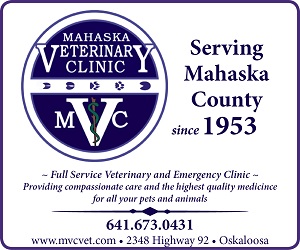Local Meat Market Surged During Pandemic
Livestock economist examines the COVID-19 meat market impact
AMES, Iowa – Local meat producers saw a spike in demand in 2020, as a result of the COVID-19 pandemic and supply chain disruptions among large-scale packers and grocery stores.
That demand created additional market opportunity for some producers, but also caused challenges among local meat processors and distributors.
In an article in the September edition of the Ag Decision Maker, Lee Schulz, associate professor and livestock economist at Iowa State University, discusses the opportunities and challenges the local meat industry faces, and some new resources that can help going forward.
According to Schulz, many local meat processors went from being a few weeks out to process an animal, to being several months, or even into 2021, as a result of the backlog created by the pandemic.
“The COVID-19 pandemic increased the effort to find foods outside of the traditional market channels,” said Schulz.
The buy-local movement is not new – but continues to be an appealing market segment for many producers and consumers. For producers, if offers the potential for a market premium, a direct connection with the consumer and the opportunity for farm recognition and branding.
In late February 2020, the United States Department of Agriculture’s Agricultural Marketing Service began reporting fruit and vegetable, beef, pork, lamb and veal, and dairy advertised prices for products identified as local, organic, or local and organic.
The National Retail Report – Local and Organic (WA_LO100) summarizes advertised prices at major retail supermarkets.
According to Schulz, the report allows producers and consumers to compare the local-price information with customary prices found in USDA’s other reports.
While the COVID-19 pandemic created some new opportunities for local meat sales in 2020, he said producers and packers need to be judicial about decisions to expand or grow in the future. Expansion comes with cost, and in order to justify expanding, the local meat industry will need to count on a steady, continued demand.
“The calculus is not easy,” he said. “Ultimately, the system must develop a careful balance between efficiency in desired meat production during normal times with greater resiliency during disruptions.”
Other articles in this month’s Ag Decision Maker include a look at yield loss from the drought and derecho, practical guidelines to file crop insurance losses and a look at the Iowa Cover Crop – Crop Insurance Demonstration Pilot program.
For more information about the meat market reaction, Schulz can be reached at 515-294-3356 or lschulz@iastate.edu.















